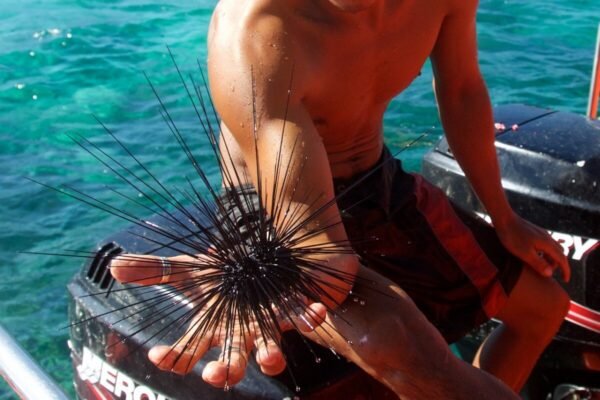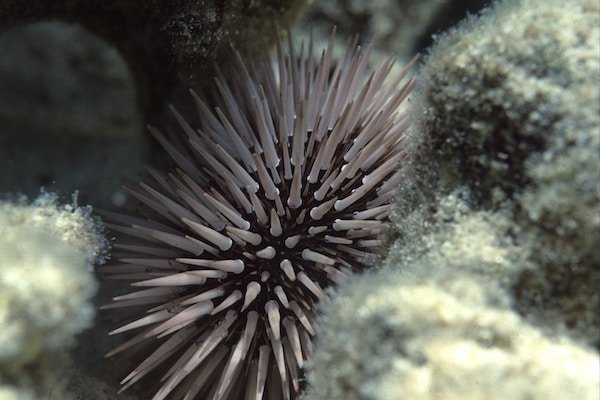
Water Safety Tips – Sea Urchins
What to Do if You Step on a Sea Urchin: Your Quick Guide to Immediate Action
Imagine you’re exploring the captivating marine landscapes during your coastal travel, when suddenly you step on a sea urchin and feel a sharp pain in your foot.
Don’t worry! In this guide, we equip you with the knowledge to confidently handle sea urchin encounters. Whether you’re an experienced beachcomber or a first-timer by the shore, know how to react if you step on a sea urchin. Join us and learn practical steps to manage unexpected sea urchin encounters.

Hi there! I’m Emily, a travel writer with a passion for exploring the great world we live in. I love to share my travel wisdom where possible to ensure people can truly make the most of the time when they visit places. One of my most memorable trips was Rio De Janeiro in Brazil, that city has some of the most wonderful, crazy energy!
Affiliate Disclosure: Some of the links on our site are affiliate links, meaning, at no additional cost to you, we may earn a commission if you click through and make a purchase. This helps us to continue providing valuable content and supports our efforts in bringing the travel community together. We only recommend products and services we believe in and think you’ll find useful. Complete details are included in our affiliate disclaimer. Thank you for your support!
Immediate Reactions When You Step on a Sea Urchin
Stepping on a sea urchin causes intense, searing pain, often accompanied by a jolting sense of shock. The sharp sensation results from the spines penetrating the skin, underscoring the importance of immediate care. Here is the table listing some reactions caused by stepping on a sea urchin:
| Reactions | Description |
|---|---|
| 1. Pain, Redness, and Swelling | Immediate pain, followed by redness and swelling at the sting site. |
| 2. Nausea and Vomiting | Some individuals may experience nausea and vomiting as a reaction to the sting. |
| 3. Paresthesias | Abnormal sensations like tingling or numbness in the affected area. |
| 4. Weakness | Weakness or muscle fatigue can occur in response to the sting. |
| 5. Abdominal Pain | Abdominal discomfort or pain might be experienced by some individuals. |
| 6. Syncope | Fainting or loss of consciousness (syncope) can be a severe reaction. |
Making sure you are covered by travel insurance in case of hospitalization is very important, make sure that you are covered by a company like Safetywing.
First Aid and Stabilizing the Injury
In the event of a sea urchin sting while swimming or wading in the ocean, it’s crucial to immediately apply marine first aid resources to alleviate pain and reduce infection risks. Here are some key points for removing sea urchin spines:
- Use tweezers: Carefully remove any protruding spines, avoiding pushing them deeper.
- Beware of spines breaking: Tweezer use can cause spines to break or splinter at the skin’s surface.
- Soak in vinegar: Soak the affected area in vinegar to dissolve the spines.
- Spines are gone when: They are no longer protruding, and there are no black or grey dots on the skin.
- Continue vinegar compresses: If spines persist, apply vinegar compresses multiple times a day.
- Pain relief: Use warm compresses and nonsteroidal anti-inflammatory drugs like ibuprofen.
- Keep it clean: In the days after, clean the wound and apply triple antibiotic ointment.
- Manage redness or itching: Topical hydrocortisone cream can help if the wound becomes red or itchy.
By following these steps, you can effectively reduce the pain and remove sea urchin spines from your skin, ensuring a smoother recovery.


Professional Medical Assistance: When to Seek Help
If pain persists or symptoms worsen a few days after the sting, professional advice is needed, as it may be infected. Here’s when to see a doctor for a sea urchin sting:
- Immediate medical attention: Seek help if you experience signs of infection or encounter symptoms like fatigue, muscle weakness, difficulty breathing, loss of feeling, or fainting.
- Deep puncture wound: If the sting is a deep puncture wound, it’s advisable to consult a doctor.
- Persistent pain or symptoms: If, a few days after being stung, your pain continues or your symptoms worsen, professional advice is warranted as it might be infected.
- Surgical removal: In cases where sea urchin spines are deeply embedded and can’t be removed easily, your doctor may need to perform surgical removal.
- Antibiotics or A&E referral: Your doctor may prescribe antibiotics or recommend a visit to the Accident and Emergency (A&E) department if necessary.
Additionally, be aware of potential allergic reactions and seek immediate medical attention if you notice symptoms like swelling, breathing difficulties, or rash. A quick and calm response is vital when encountering a sea urchin sting while exploring beaches or tide pools.
Treatment Options: Home Remedies vs. Medical Solutions
If you’ve stepped on a sea urchin, your primary concern should be safely removing the spines from your skin. Depending on the injury’s severity, it may be necessary to seek medical treatment. While awaiting professional help, consider trying a few home remedies.
Prevention Tips: How to Avoid
Imagine enjoying a beautiful day at the beach when suddenly, an accidental encounter with a sea urchin turns your joy into pain. These spiky marine creatures inhabit oceans worldwide, their sharp spines capable of piercing your skin, causing excruciating pain and the risk of infection. In our quick guide, we’ll help you understand how to respond when you step on a sea urchin.
| Preventive Measures | Description |
|---|---|
| 1. Protective gear | Wear water shoes or flippers when swimming or snorkeling to shield your feet from sea urchin encounters and sharp debris. |
| 2. Observe from a distance | Appreciate sea urchins from afar; avoid touching them to prevent accidental stings. |
| 3. Daytime swimming | Avoid swimming at night in areas known to have sea urchins, as they are more active after dark. |
| 4. Tread carefully | Move cautiously in the water to avoid accidentally stepping on sea urchins, especially in areas where they are prevalent. |
| 5. Watch your hands | Be mindful of where you place your hands to prevent unexpected contact with sea urchins while exploring underwater. |
Remember that knowledge is the cornerstone of safety in aquatic environments, ensuring that your coastal ventures remain enjoyable.
Conclusion
Facing a sea urchin encounter may be painful, but it doesn’t have to ruin your beach vacation. Remember to practice foot care, stay informed and always be ready to seek professional assistance when necessary. Your beach getaway can remain enjoyable and worry-free by taking these proactive steps. Your seaside getaway awaits – enjoy it safely!
FAQs – Sea Urchin Encounters and Safety
Sea urchins are not inherently poisonous to step on, but their sharp spines can cause painful stings and may lead to infection if not treated properly.
If you experience severe symptoms or signs of infection after stepping on a sea urchin, it’s advisable to seek medical attention at the hospital.
To remove sea urchin spines from your feet, use tweezers to gently extract them. Be cautious not to push them deeper into the skin, as this can worsen the situation.
You can hold a sea urchin, but you should handle them with care, avoiding the sharp spines. It’s best to use protective gear or gloves when handling them to prevent accidental stings.










